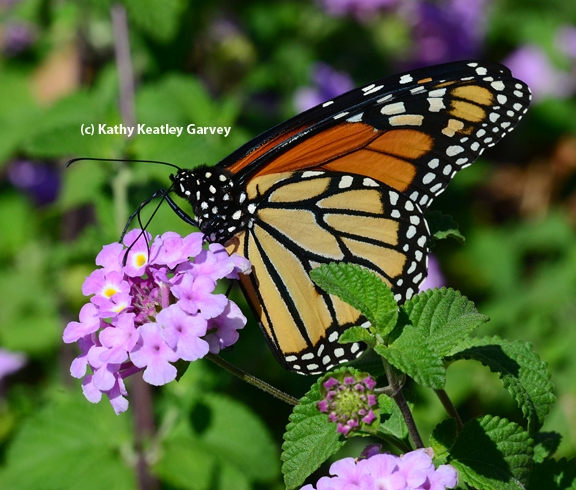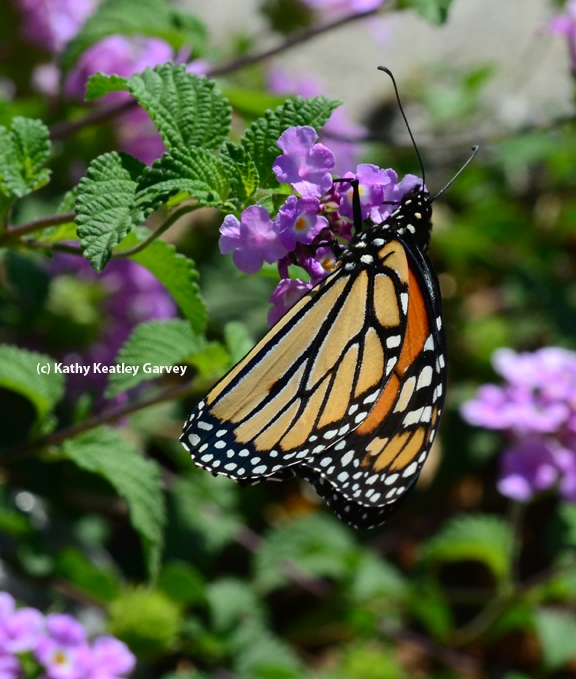The news is not good.
Scores of Monarch butterflies (Danaus plexippus) are now migrating toward their overwintering zone in Mexico but they're doing so in dwindling numbers.
"Monarch butterflies appear headed for a perhaps unprecedented population crash, according to scientists and monarch watchers who have been keeping tabs on the species in their main summer home in Eastern and Central North America," wrote reporter Daniel Schwartz of CBC News in a Sept. 24 news article.
"There had been hope that on their journey north from their overwintering zone in Mexico, the insects' numbers would build through the generations, but there's no indication that happened."
We spotted six Monarchs nectaring on lantana on Sept. 14 in south Vacaville. "I think the numbers are up regionally, but I've seen no breeding at all in the Central Valley," said butterfly expert Art Shapiro, distinguished professor of evolution and ecology at UC Davis. "They bred like mad in Nevada this year."
Shapiro writes on his butterfly monitoring website: "The Monarch overwinters on the central coast and moves inland, typically in early March."
In his book, The Handy Bug Answer Book, entomologist Gilbert Waldbauer, professor emeritus of the University of Illinois at Urbana-Champaign, points out that Monarchs are the most famous of the "insect migrants that make a return trip."
Which begs the question: "Do the overwintering monarchs in Mexico feed?" Responds Waldbauer: "Practically none of them feed. On warm days, they leave the trees to drink water, but the few flowers near the overwintering sites are sucked dry of nectar by the first few monarchs that find them."
They survive, he writes, "on large stores of energy-rich body fat that they acquired as they migrated south. On average, their bodies consist of about 50 percent fat. Their fat supply lasts through the winter because, inactive in the cold climate of the high mountains, they use up very little energy."
Attached Images:

